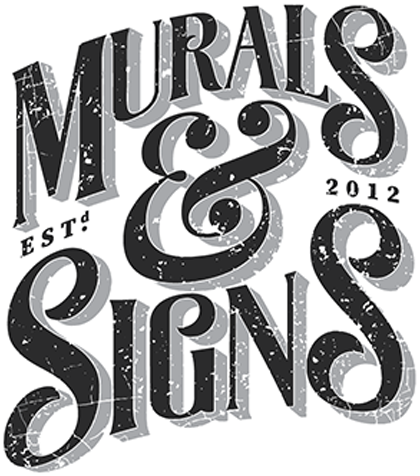In the bustling world of commercial sign painting, safety should always be a top priority. Balancing creativity and precision with safety measures ensures that sign painters can carry out their work efficiently while minimizing risks. This article delves into essential safety practices that every commercial sign painter should embrace. From preparing the workspace to using protective gear, these guidelines will not only safeguard the well-being of painters but also contribute to the overall quality of their work.
Preparing the Workspace for Safe Painting
Creating a safe working environment is the foundation of successful sign painting projects. Implementing the following measures can prevent accidents and create a smooth workflow:
Inspect the Work Area
Before starting any painting job, thoroughly inspect the workspace. Check for any potential hazards such as uneven surfaces, loose equipment, or overhead obstructions. Clear the area of debris and clutter to provide ample space for movement.
Adequate Lighting
Proper lighting is crucial for precision and safety. Ensure that the work area is well-lit, both natural and artificial lighting sources. This reduces eyestrain and minimizes the chances of mistakes caused by poor visibility.
Secure Ladders and Scaffolding
When working at heights, secure ladders and scaffolding properly. Ensure that they are stable, positioned on flat surfaces, and locked in place. Regularly inspect these structures for any signs of wear and tear.
Using the Right Equipment and Tools Safely
Using appropriate tools and equipment is essential for safety and achieving professional results. Follow these guidelines:
High-Quality Paints and Brushes
Invest in high-quality paints and brushes. Inferior products can lead to frustration and potentially unsafe working conditions. Quality materials result in smoother strokes and better adherence to safety standards.
Proper Ventilation
When working with paints and solvents, ensure adequate ventilation. Fumes can be harmful when inhaled in enclosed spaces. Open windows, doors, or use exhaust fans to maintain a breathable atmosphere.
Electrical Safety
If your project involves the use of electrical equipment, prioritize electrical safety. Keep cords out of walkways, avoid overloading power outlets, and regularly inspect cords for damage.
Personal Protective Gear
Using the right personal protective equipment (PPE) is non-negotiable in sign painting. Each painter should be equipped with the following:
Safety Glasses or Goggles
Protect your eyes from splatters, fumes, and debris by wearing safety glasses or goggles. These will prevent eye injuries and ensure clear vision throughout the project.
Respirators
In situations where airborne particles or fumes are present, respirators are a must. Choose a respirator that is appropriate for the materials you’re working with and ensure a proper fit.
Gloves and Protective Clothing
Wearing gloves and appropriate clothing safeguards your skin from potential irritants in paints and chemicals. Long sleeves and pants are recommended to reduce direct skin exposure.
Hard Hats
For outdoor projects or areas where objects could fall from above, wearing a hard hat is vital. Protect your head from potential impact and ensure your safety on the job.
Handling Hazardous Materials
Sign painting often involves handling hazardous materials. Adhering to safety measures when working with such substances is paramount:
Proper Storage
Store paints, solvents, and other hazardous materials in well-ventilated areas away from direct sunlight and heat sources. Follow manufacturer instructions for safe storage.
Labeling and Identification
Clearly label all containers with their contents. This prevents accidental mix-ups and ensures that everyone on the team is aware of the materials being used.
Waste Disposal
Dispose of hazardous waste properly. Follow local regulations for disposal to prevent environmental contamination and potential health risks.
Team Communication and Emergency Plans
Maintaining effective communication within the team and having emergency plans in place can be life-saving. Consider these aspects:
Communication
Establish clear communication channels among team members. This ensures that everyone is aware of the project’s progress and any potential safety concerns.
Emergency Response
Have a well-defined emergency response plan in case of accidents or unforeseen events. This plan should include first aid procedures and contact information for medical professionals.
Ongoing Training and Education
Safety practices evolve, and it’s essential to stay up-to-date with the latest standards and techniques:
Training Workshops
Encourage sign painters to attend safety workshops and training sessions regularly. This keeps them informed about the latest safety practices and technologies in the industry.
Continuous Learning
Promote a culture of continuous learning within your team. Encourage the sharing of safety tips and experiences, fostering an environment where everyone contributes to enhancing safety measures.
Conclusion
Prioritizing safety in commercial sign painting is not just a legal obligation; it’s a moral responsibility. By implementing these best safety practices, sign painters can create a work environment that not only protects their well-being but also elevates the quality of their craft. From preparing the workspace to using personal protective gear and handling hazardous materials, every step counts toward ensuring a safe and successful painting project.
